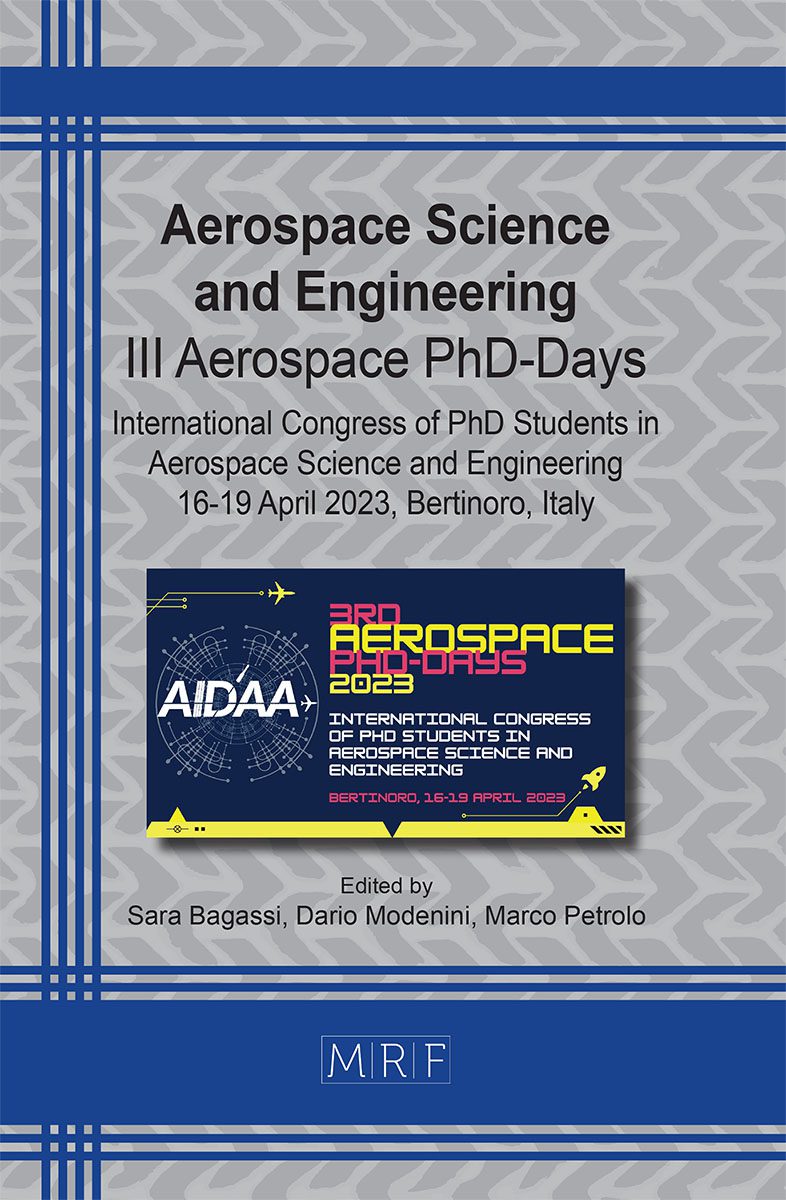Numerical prediction of plasma formation on a sphere in hypersonic sub-orbital flight regime
Salvatore Esposito
download PDFAbstract. Hypersonic flight is challenging for vehicle design and operation due to the intense heating generated by kinetic energy transfer from the vehicle to the gas surrounding it. As a result, plasma is produced, which can interfere with radar tracking and communication, particularly upon re-entry into the Earth’s atmosphere. Plasma affects wave propagation, and if the electron density is high enough, waves may lose intensity as they propagate, distorting radar traces. The objective of this research is to predict plasma formation during suborbital hypersonic flight, with a specific focus on determining the Mach number and altitude conditions that generate critical levels of plasma density. To achieve this, Computational Fluid Dynamics is employed to solve the Navier-Stokes equations, and a multi-temperature thermochemical model is adopted to accurately predict plasma behavior. The model is applied in a simplified scenario involving a sphere exposed to hypersonic flow.
Keywords
Hypersonics, Plasma
Published online 9/1/2023, 7 pages
Copyright © 2023 by the author(s)
Published under license by Materials Research Forum LLC., Millersville PA, USA
Citation: Salvatore Esposito, Numerical prediction of plasma formation on a sphere in hypersonic sub-orbital flight regime, Materials Research Proceedings, Vol. 33, pp 29-35, 2023
DOI: https://doi.org/10.21741/9781644902677-5
The article was published as article 5 of the book Aerospace Science and Engineering
![]() Content from this work may be used under the terms of the Creative Commons Attribution 3.0 license. Any further distribution of this work must maintain attribution to the author(s) and the title of the work, journal citation and DOI.
Content from this work may be used under the terms of the Creative Commons Attribution 3.0 license. Any further distribution of this work must maintain attribution to the author(s) and the title of the work, journal citation and DOI.
References
[1] T. H. Stix, Waves in Plasmas. Springer, 1992
[2] L. D. Landau, E. M. Lifshitz, and L. P. Pitaevskii, Statistical Physics, vol. 1. Oxford: Pergamon Press, 1980. https://doi.org/10.1016/B978-0-08-057046-4.50008-7
[3] Park, Chul. “Review of chemical-kinetic problems of future NASA missions. I-Earth entries.” Journal of Thermophysics and Heat transfer 7.3 (1993): 385-398. https://doi.org/10.2514/3.431
[4] Park, Chul, Richard L. Jaffe, and Harry Partridge. “Chemical-kinetic parameters of hyperbolic earth entry.” Journal of Thermophysics and Heat transfer 15.1 (2001): 76-90. https://doi.org/10.2514/2.6582
[5] McBride, Bonnie J. Coefficients for calculating thermodynamic and transport properties of individual species. Vol. 4513. National Aeronautics and Space Administration, Office of Management, Scientific and Technical Information Program, 1993.
[6] Gupta, Roop N., et al. “A review of reaction rates and thermodynamic and transport properties for an 11-species air model for chemical and thermal nonequilibrium calculations to 30000 K.” (1990).
[7] Tracy, Cameron L., and David Wright. “Modeling the performance of hypersonic boost-glide missiles.” Science & Global Security 28.3 (2020): 135-170. https://doi.org/10.1080/08929882.2020.1864945
[8] Jones, W. Linwood, and Aubrey E. Cross. Electrostatic-probe measurements of plasma parameters for two reentry flight experiments at 25000 feet per second. Vol. 6617. National Aeronautics and Space Administration, 1972.












